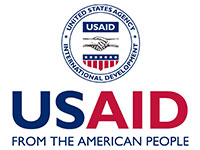Client Chemonics, ACDI\VOCA, Deloitte
Funding USAID Georgia
Project 3 projects over 6 yaers
Date 2006 – 2011
Results Georgia was dependent on Russia for 80 90%
of their exports in 2006, through our
support Georgian wineries expanded their sales
beyond Russia to include Whole Foods Market
and other non-traditional markets.
Lead consultant Jim Krigbaum
Category Trade and balance of power
Georgian Wine Case Study
The 2006 Russian import ban of Moldovan and Georgian wines began in late March 2006 and created a diplomatic conflict between the Republic of Moldova and Georgia on the one hand and Russia on the other. Wine trade with Russia is responsible for 80-90% of the total wine exports in both countries. While wine is typically not an agricultural product that USAID supports, the fact that it is such a critical element for the Georgian and Moldavian economies and the need to counter-balance Russian influence USAID issued a waiver to support the wine industries in these countries.
20/20DC worked in both Moldova and Georgia to assist them diversify their markets. The Moldovan producers found markets in Europe, with known varieties, low prices and mass-produced wine. European buyers were able to import Moldovan wine and blend with their local production. Georgia was not so lucky with most of their varieties being unknown in the Western European and broader global markets. The producers in Georgia were also smaller more boutique producers than in Moldova and had high costs of production meeting a niche market demand in Russia.
To help Georgian producers better understand the global markets our first effort included bringing in 100+ bottles of wine sold in USA retail stores and doing a training and blind tasting of what sells in the USA. During our first training the Georgians were offering their product at $18 USD ex-works believing that based on this price they could sell in the USA at a “market price” of around $24.00. USD. They were surprised to learn that at the time the average price in the USA for a 750 ML bottle was $7.50 and a $18 ex-works price would end up at retail between $60 and $75 USD and at a restaurant in excess of $120. They also learned that wines drank by American’s had a flavor profile very different from what they were selling into Russia.
Our effort in Georgia, took many years and a long-term strategy which included bringing individuals that met the full supply chain in the USA – importer, distributor and retailer. This effort resulted in Whole Foods Market retailing Georgian product in several markets for the first time as a result of our efforts.
To stimulate demand we needed to reach the wine buyers, sommelier and wine influencers were unfamiliar with Georgian wine. Therefore with distribution in place we brought 8 wine influencers to Georgia including four Masters of Wine. These individuals returned to the USA after a weeklong tour of Georgia's leading wine producers and wrote articles, blogs and promoted Georgian wine to other influencers.
Changing consumer demand requires a long-term strategy. Our plan would not have worked to bring the influencers before distribution was in place and it would not have succeeded had we brought just the importer to Georgia without the distributor and retailer in place.
This is one USAID program, actually 3 programs, that was able to look at the long-term efforts and as a result achieved sustainable success.





